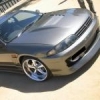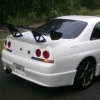RB30 Engineers help PLZ!!
Announcements
-
Similar Content
-
Latest Posts
-
And I just realised that that advice is slightly nonsensical for a GTR, because you need 2 of them. But it is otherwise true.
-
Having had a reasonable look at the car, I'll be able to remove the (one time) rams and retract the hinge (they are held in the down location by a tiny (m3?) sacrificial screw) which will get it physically back in shape. From there if you remove the rams you need a resistor to turn off the airbag light (as Mark said, there are plug in kits and I might go that way because its reversible). And...per all the threads on here, even if you have the resistors to turn off the airbag light, the bonnet light will stay on as it writes to the airbag computer history - that is either replace the airbag controller, reprogam the EPROM (if I can work out how), or remove the globe from the dash. Having seen how sensitive this system is, if I had my time over I'd pre-emptively remove the rams, even on a road car, because this is all a very unnecessary pain in the arse. Reminds me, time to go and have a look at the Fuga too....
-
Hi, I need same this wing nismo , Does anyone have one for sale? if any one have can contact me 00966546888343
-
Nah, lots of insurance repairs on V36 and V37 for pedestrians deployments. Reasons ranging from possums, to extremely severe potholes have deployed them. However, paying for the full repair can still be upto $5k AU some people have noted!
-
Hi, i got 1998 r34 4 door auto abs model and its manual converted with bigbox when i bought it . I successfully find the neutral and reverse light wire but can’t find the speed signal wires for speedo drive. I know its grey plug but on my loom no grey plug with 2 wires . I opened the loom upto where it getting branch with other wire, i’m amazed they is no wire. So need help how to fix the speedometer problem. I search on google it says some r34 model measure speed from diff sensor. Is it right? I talk to a wrecker he say no this isn’t right, i’m kinda stuck. Please help
-







Recommended Posts
Create an account or sign in to comment
You need to be a member in order to leave a comment
Create an account
Sign up for a new account in our community. It's easy!
Register a new accountSign in
Already have an account? Sign in here.
Sign In Now